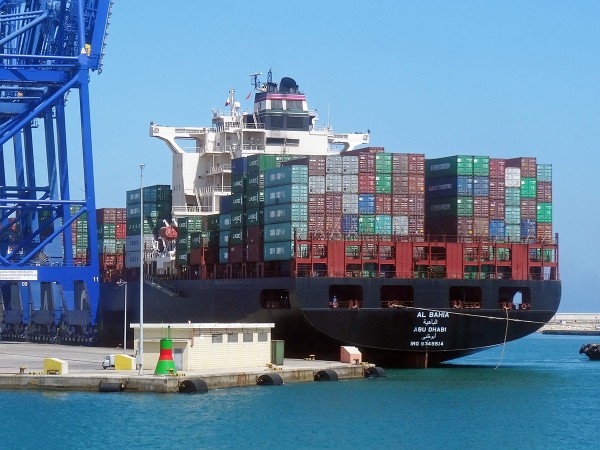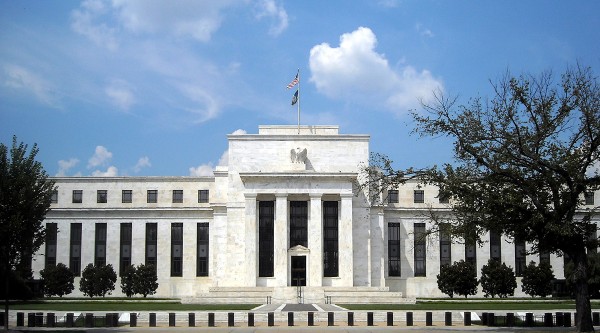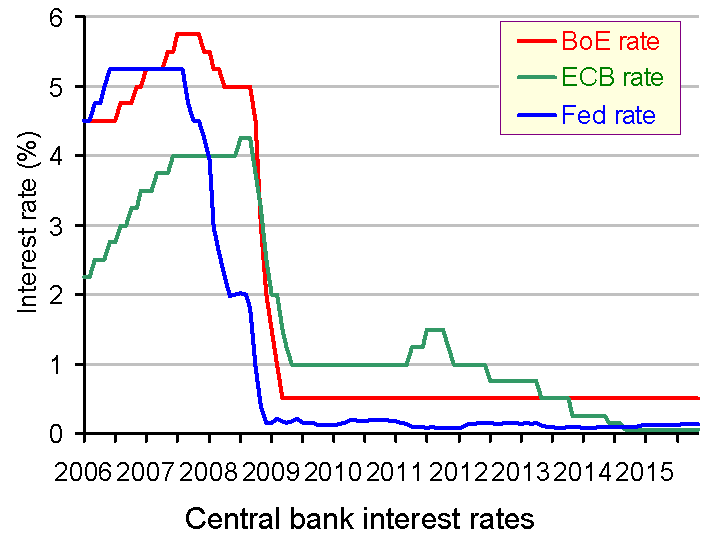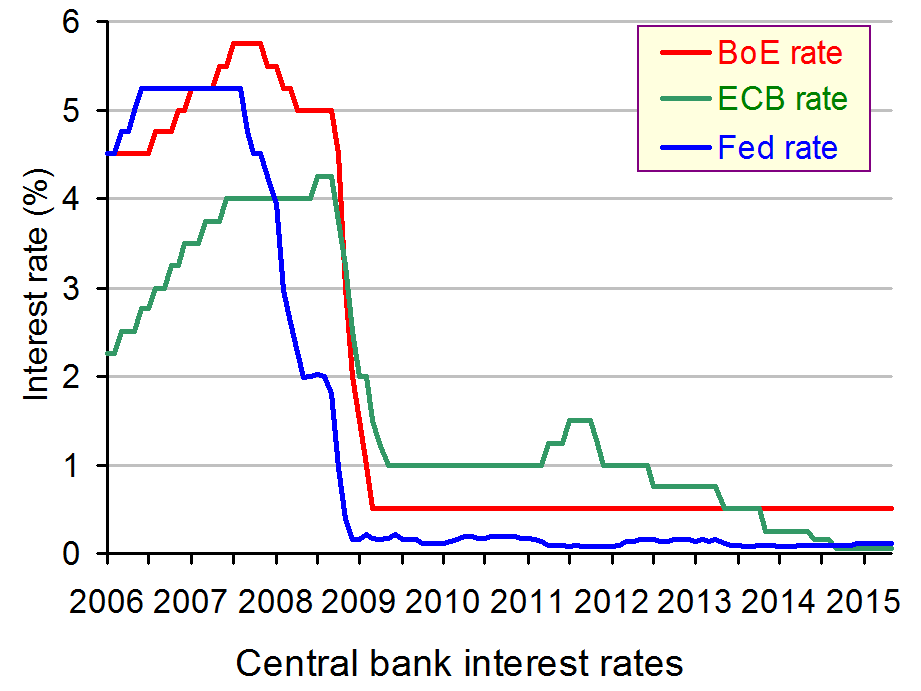 Economic growth is vital to an economy: it helps to create jobs and is crucial in stimulating confidence, both for businesses and consumers. Growth comes from various sources, both domestic and external, and so for each individual country it’s not just its growth rate that is important, but the growth rates of other countries, in particular those it trades with.
Economic growth is vital to an economy: it helps to create jobs and is crucial in stimulating confidence, both for businesses and consumers. Growth comes from various sources, both domestic and external, and so for each individual country it’s not just its growth rate that is important, but the growth rates of other countries, in particular those it trades with.
Recent data suggest that the global economy could be on the downturn and here we consider three countries/continents.
The US economy has been doing relatively well and we saw discussion by the Federal Reserve as to whether the economy was in a position to be able to handle an increase in interest rates. Although rates didn’t rise, there was a general consensus that a rate rise would not significantly harm the economy. However, perhaps those opinions may now be changing with the latest information regarding US growth. In the second quarter of 2015, growth was recorded at 3.9%, but according to the Department of Commerce, it fell to 1.5% for the third quarter. Though it’s still a solid growth rate, especially compared to other economies, it does represent a significant fall from quarter to quarter.
Many analysts suggest that this slowing is just a blip, partly the result of running down stocks, but it’s also a trend that has occurred in the UK. Although the fall in growth in the UK (see series IHYR) has been less than in the USA, it is still a fall. Annual growth was recorded at 2.7% in quarter 1, but fell to 2.4% in quarter 2 and to 2.3% in quarter 3 (with GDP in quarter 3 only 0.5% higher than in quarter 2). A big cause of this slowdown in growth has been a fall in manufacturing output and it is the service sector that prevented an even larger slowdown.
And it’s not just the West that is experiencing declining growth. The IMF has warned of a slowdown in economic growth in Africa. Although the absolute annual rate of growth at 3.75% is high compared to the UK, it does represent the slowest rate of growth in the past six years. One key factor has been the lower oil prices. Although this has helped to stimulate consumer spending in many countries, it has hit oil-producing countries.
With some of the big players experiencing slowdowns, world economic growth may be taking something of a dive. The Christmas period in many countries is when companies will make significant contributions to their annual sales, and this year these sales are going to be vital. The following articles consider the slowdowns in growth around the world.
Articles
US growth slows despite spending free Financial Times, Sam Fleming and Richard Blackden (29/10/15)
US economic growth slows in third quarter as businesses cut back The Guardian, Dominic Rushe (30/10/15)
US economic growth slows sharply BBC News (29/10/15)
US Q3 gross domestic product up 1.5% vs 1.6% growth expected CNBC, Reuters (29/10/15)
US growth cools in third quarter Wall Street Journal, Eric Morath (29/10/15)
UK economic growth slows to 0.5% in third quarter BBC News (27/10/15)
GDP growth in the UK slows more than expected to 0.5% The Guardian, Julia Kollewe (27/1015)
UK growth slows as construction and manufacturing output shrinks The Telegraph, Szu Ping Chan (27/10/15)
UK economy loses steam as GDP growth slows to 0.5% Financial Times, Ferdinando Giugliano (27/10/15)
No UK growth without services BBC News, Robert Peston (27/10/15)
IMF warns of African economic slowdown BBC News (27/10/15)
African growth feels the strain from China’s slowdown Financial Times, Andrew England (27/10/15)
Tax credits: George Osborne ‘comfortable’ with ‘judgement call’ BBC News (22/10/15)
IMF revises down Sub-Saharan Africa 2015 growth Wall Street Journal, Matina Stevis (27/10/15)
WEO publications
World Economic Outlook, October 2015: Adjusting to Lower Commodity Prices IMF (6/10/15)
 Global Growth Slows Further, IMF’s latest World Economic Outlook IMF Podcast, Maurice Obstfeld (6/10/15)
Global Growth Slows Further, IMF’s latest World Economic Outlook IMF Podcast, Maurice Obstfeld (6/10/15)
Transcript of the World Economic Outlook Press Conference IMF (6/10/15)
World Economic Outlook Database IMF (October 2015 edition)
Questions
- How do we measure economic growth?
- Using an AD/AS diagram, explain why economic growth has fallen in (a) the US, (b) the UK and (c) Africa.
- How have oil prices contributed towards recent growth data?
- Why has the IMF forecast slowing growth for Africa and how dependent is the African economy on growth in China?
- Which sectors are contributing towards slower growth in each of the 3 countries/continents considered? Can you explain the reason for the downturn in each sector?
- What do you think should be done regarding interest rates in the coming months?
 Interest rates are the main tool of monetary policy and have a history of being an effective tool in creating macroeconomic stability. There has been much discussion since the end of the financial crisis concerning when interest rates would rise in the US (and the UK) and for the US, the case is stronger, given its rate of growth, which has averaged at 2.2% per annum since June 2009.
Interest rates are the main tool of monetary policy and have a history of being an effective tool in creating macroeconomic stability. There has been much discussion since the end of the financial crisis concerning when interest rates would rise in the US (and the UK) and for the US, the case is stronger, given its rate of growth, which has averaged at 2.2% per annum since June 2009.
As in the UK, the question of ‘will rates rise?’ has a clear and certain answer: Yes. The more challenging question is ‘when?’. Much of the macroeconomic data for the US is promising, with positive economic growth (and relatively strong in comparison to the UK and Eurozone), a low unemployment rate and inflation of 0.3%. This last figure is ‘too low’, but it comes in at a much more attractive 1.2% if you exclude food and energy costs and there is an argument for doing this, given the price of oil. The data on unemployment and growth might suggest that the economy is at a stage where a rate rise could be managed, but the inflation data indicates that low interest rates might be needed to keep inflation above 0%. Furthermore, there are concerns that the low unemployment figure is somewhat misleading, given that under-employment is quite high at 10.3% and there are still many who are long-term unemployed, having been out of work for more than 6 months.

Interest rates can be a powerful tool in affecting the components of aggregate demand (AD) and hence the macroeconomic variables. If interest rates fall, it can help to stimulate AD by reducing borrowing costs for consumers and businesses, reducing the incentive to save, cutting variable rate mortgage payments and depreciating the exchange rate. Collectively these effects can stimulate an economy and hence create economic growth, reduce unemployment and push up prices. However, interest rates have been at almost 0% since the financial crisis, so the only way is up. Reversing the aforementioned effects could then spell trouble, if the economy is not in a sufficiently strong position.
For many, the strength of the US economy, while relatively good, is not yet good enough to justify a rate rise. It may harm investment, growth and unemployment and none of these variables are sufficiently high to warrant a rate rise, especially given the slowdown in the emerging markets. Karishma Vaswani, from BBC News said:
“The current global hand-wringing and head-holding over whether the US Fed will or won’t raise interest rates later has got investors here in Asia worried about what this means for their economies.
The Fed has become the favourite whipping boy of Asia’s central bankers, with cries from India to Indonesia to “just get on with it”.”
There are many, including Professor John Taylor from Stanford University and a former senior Treasury official, a rate rise is well over-due. The market is expecting one and has been for some time and these expectations aren’t going away, so ‘just get on with it.’ Janet Yellen, the Chair of the Federal Reserve is in a tricky situation. She knows that whatever is decided, markets around the world will react – no pressure then! The following articles consider the interest rate debate.
Articles
FTSE slides ahead of Fed interest rates decision The Telegraph, Tara Cunningham (17/9/15)
US’s interest rate rise dilemma BBC News, Andrew Walker (17/9/15)
US interest rate rise: how it could affect your savings and your mortgage Independent (17/9/15)
All eyes on Federal Reserve as it prepares for interest rate announcement The Guardian, Rupert Neate (16/9/15)
Federal Reserve meeting: Will US interest rates rise and should they? The Telegraph, Peter Spence (16/9/15)
Markets push US rate rise bets into 2016 as China woes keep Fed on hold: as it happened The Telegraph, Szu Ping Chan (17/9/15)
Federal Reserve puts rate rise on hold The Guardian (17/9/15)
US central bank leave interest rates unchanged BBC News (17/5/15)
Fed leaves interest rates unchanged Wall Street Journal, Jon Hilsenrath (17/9/15)
Asian markets mostly rally, US Futures waver ahead of Fed interest rate decision International Business Times, Aditya Tejas (17/9/15)
Data
Selected US interest rates Board of Governors of the Federal Reserve System (see, for example, Federal Funds Effective rate (monthly))
Questions
- What happened to US interest rates in September?
- Present the main arguments for keeping interest rates on hold.
- What were the arguments in favour of raising interest rates and do they differ depending on whether interest rates rise slowly or very rapidly?
- How did stock markets around the world react to Janet Yellen’s announcement? Is it good news for the UK?
- Using a diagram to support your explanation, outline why interest rates are such a powerful tool of monetary policy and how they affect the main macroeconomic objectives.
- Do you think other central banks will take note of the Fed’s decision, when they make their interest rate decisions in the coming months? Explain your answer.
 The US economy has been performing relatively well, but as with the UK economy, growth in the first quarter of 2015 has slowed. In the US, it has slowed to 0.2%, which is below expectations and said to be due to ‘transitory factors’. In response, the Federal Reserve has kept interest rates at a record low, within the band 0.0% to 0.25%.
The US economy has been performing relatively well, but as with the UK economy, growth in the first quarter of 2015 has slowed. In the US, it has slowed to 0.2%, which is below expectations and said to be due to ‘transitory factors’. In response, the Federal Reserve has kept interest rates at a record low, within the band 0.0% to 0.25%.
The USA appears relatively unconcerned about the slower growth it is experiencing and expects growth to recover in the next quarter. The Fed said:
“Growth in household spending declined; households’ real incomes rose strongly, partly reflecting earlier declines in energy prices, and consumer sentiment remains high. Business fixed investment softened, the recovery in the housing sector remained slow, and exports declined.”
Nothing has been said as to when interest rates may rise and with this unexpected slowing of the economy, further delays are likely. An investment Manager from Aberdeen Asset Management said:
“The removal of the Fed’s time dependent forward guidance could be significant. It means that any meeting from now on could be the one when they announce that magic first rate rise.”
Low rates will provide optimal conditions for stimulating growth. A key instrument of monetary policy, interest rates affect many of the components of aggregate demand.  Lower interest rates reduce the cost of borrowing, reduce the return on savings and hence encourage consumption. They can also reduce mortgage repayments and have a role in reducing the exchange rate. All of these factors are crucial for any economic stimulus.
Lower interest rates reduce the cost of borrowing, reduce the return on savings and hence encourage consumption. They can also reduce mortgage repayments and have a role in reducing the exchange rate. All of these factors are crucial for any economic stimulus.
Analysts are not expecting rates to rise in the June meeting and so attention has now turned to September as the likely time when interest rates will increase and finally reward savers. Any earlier increase in rates could spell trouble for economic growth and similar arguments can be made in the UK and across the eurozone. The following articles consider the US economy.
Federal Reserve keeps interest rates at record low BBC News, Kim Gittleson (29/4/15)
Shock stalling of US economy hits chances of early Fed rate rise The Guardian, Larry Elliott (29/4/15)
US Fed leave interest rates unchanged after poor GDP figures Independent, Andrew Dewson (30/4/15)
Fed could give clues on first interest rate hike USA Today, Paul Davidson (28/4/15)
Fed’s downgrade of economic outlook signals longer rate hike wait Reuters, Michael Flaherty and Howard Schneider (29/4/15)
Five things that stopped the Fed raising rates The Telegraph, Peter Spence (29/4/15)
Questions
- By outlining the key components of aggregate demand, explain the mechanisms by which interest rates will affect each component.
- How can inflation rates be affected by interest rates?
- Why could it be helpful for the Fed not to provide any forward guidance?
- What are the key factors behind the slowdown of growth in the USA? Do you agree that they are transitory factors?
- Who would be helped and harmed by a rate rise?
- Consider the main macroeconomic objectives and in each case, with respect to the current situation in the USA, explain whether economic theory would suggest that interest rates should (a) fall , (b) remain as they are, or (c) rise.
The two biggest world exporters have signed trade deals worth $15bn (£9bn). The Chinese Premier and German Chancellor were targeting an increase in bilateral trade to £178bn over the next five years. Premier Wen has also offered support to some of the European countries struggling with their debt. Despite this offer of support, there is something in it for the Chinese economy. China’s foreign exchange reserves are at a record high, but about 25% are invested in euro-denominated assets, hence China has a very strong interest in preventing the collapse of the euro. Furthermore, it is also interested in diversifying its export market to reduce its reliance on US markets. This is particularly important given the growth in protectionism in the US economy. Mr. Innes-ker said:
“China’s dependence and exposure to the US dollar creates issues for its own economy to the extent that it’s a hostage to US monetary policy.”
China’s interest in the European economies may provide an opportunity for the UK economy, as it is a country with ideal investment conditions and is already one of China’s most important trading partners. David Cameron, in a meeting with Wen, has said he wants bilateral trade to increase to £62bn by 2015. The amount is nothing in comparison to the trade deal between China and Germany, but still a significant potential sum for the UK economy. The following articles consider the Chinese economy and its role in the global environment.
Self-interest in China’s helping hand Asia Times Online, Jian Junbo (30/6/11)
China and Germany ink $15bn trade deals as leaders meet BBC News (29/6/11)
Chinese leader’s visit to Germany ends with large trade deals The New York Times, Judy Dempsey (28/6/11)
China offers helping hand to Eurozone Guardian, Helen Pidd (28/6/11)
Rights, trade to dominate Germany-China talks Associated Press, Deborah Cole (28/6/11)
China promises EU ‘helping hand’ with debt crisis Reuters, James Pomfret and Stephen Brown (28/6/11)
We still don’t grasp how little we matter to China Independent, Hamish McRae (29/6/11)
Questions
- What are the benefits of trade?
- Why is it important for the Chinese economy to diversify its export market?
- What does it mean by the statement that China is hostage to US monetary policy?
- Why are China’s foreign exchange reserves at a record high?
- What are the reasons behind China’s interest in Europe? Is it more of a ‘helping hand’ or more to do with furthering China’s own ambitions?
- What might the trade deal between China and Germany mean for trade between China and other nations? Is the deal to the benefit of everyone?
Until recently, gold prices had been rising. If you watch TV, you can hardly have failed to notice the adverts offering cash back for your gold. After peaking on the 2nd December 2009, however, at about $1220 an ounce, the price of gold fell almost $100 in just four trading days.
Over the past two months, we’ve seen a fluctuating US dollar and a fluctuating price of gold. In the news item ‘A golden age‘ we looked at the factors that led to a rising price of gold and one key factor was the weakness of the dollar. However, the dollar’s downward spiral appears to have halted, at least for the time being.
Figures for US GDP were higher than expected, with increases in economic activity in the 4th quarter of 2009. This may partly explain why the dollar strengthened, and prices of gold began to fall, as people began investing in US assets. And it was not just gold that fell – there was speculation that the price of copper too would fall as investors switched to US assets.
Then, at the end of January the dollar fell against most currencies and a variety of refined products recovered from recent losses incurred. This pause in the demand for the dollar may cause gold prices to increase once again, as traditionally, gold moves inversely to Greenback. Although the price of gold was down 1.1% for the month of January, speculation that the US budget deficit could be as big as $1.6 trillion could mean further support for gold and testing times to come for the dollar.
At the beginning of February 2010, the US dollar weakened against the euro, as investors favoured a return to riskier assets in search of higher returns, encouraged by signs of strengthening manufacturing in key economies. With the global economy coming out of the worst downturn in decades, will the dollar begin to strengthen?
Dollar advances on reduced demand for risk Wall Street Journal (15/1/10)
US dollar on defensive as risk appetite rises Business News (2/2/10)
US dollar on defensive as risk appetite rises Business News (2/2/10)
Why the price of gold is rising BBC News (13/10/09)
Gold trend remains firmly down despite dollar rally confronted by massive US budge deficit The Market Oracle (1/2/10)
Gold may rise for first time in week as dollar spurs demand The China Post (2/2/10)
Dollar and Yen fall as optimism returns Daily Forex Strategy Briefing, Hans Nilsson (2/2/10)
Gold declines for second day, as dollar’s advance curbs demand Bloomberg, Kim Kyoungwha (8/1/10)
Crude ends up as equities rise, dollar slips Reuters (25/1/10)
Copper may decline as stronger dollar saps demand Bloomberg (22/1/10)
Questions
- How is the price of gold determined? Use a diagram to illustrate this process. If there is a change in demand or supply for gold, what factors will affect the extent of the price change?
- Why does a strengthening dollar imply a lower price of gold?
- Why will a large US budget deficit support gold, but test the dollar?
- How is the exchange rate determined? What factors affect the supply of dollars and the demand for dollars?
- What are the main factors that could explain why there has been a rise in the dollar? Could speculation play a role?
 Economic growth is vital to an economy: it helps to create jobs and is crucial in stimulating confidence, both for businesses and consumers. Growth comes from various sources, both domestic and external, and so for each individual country it’s not just its growth rate that is important, but the growth rates of other countries, in particular those it trades with.
Economic growth is vital to an economy: it helps to create jobs and is crucial in stimulating confidence, both for businesses and consumers. Growth comes from various sources, both domestic and external, and so for each individual country it’s not just its growth rate that is important, but the growth rates of other countries, in particular those it trades with. Global Growth Slows Further, IMF’s latest World Economic Outlook IMF Podcast, Maurice Obstfeld (6/10/15)
Global Growth Slows Further, IMF’s latest World Economic Outlook IMF Podcast, Maurice Obstfeld (6/10/15)

